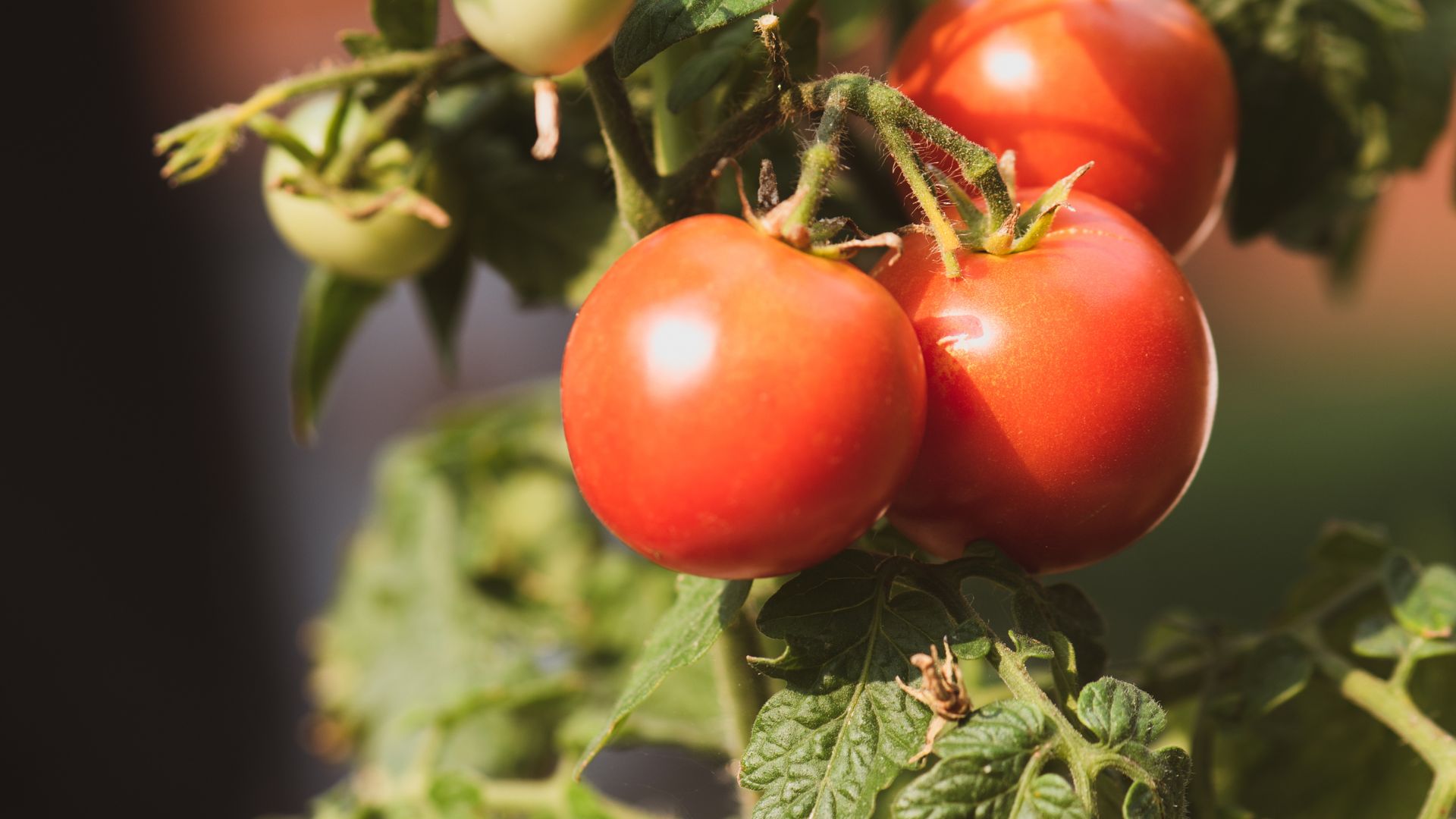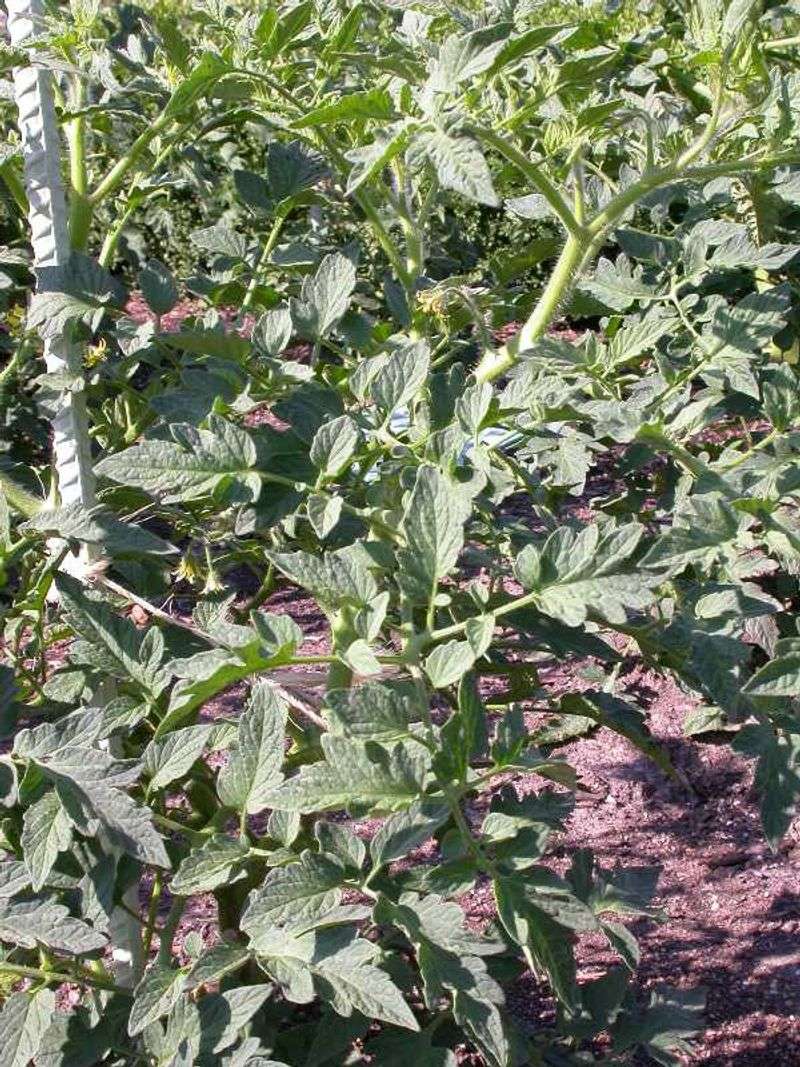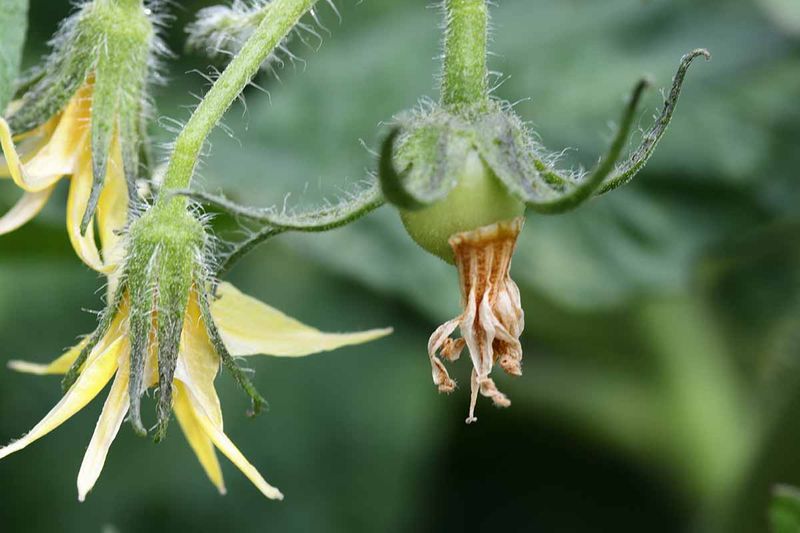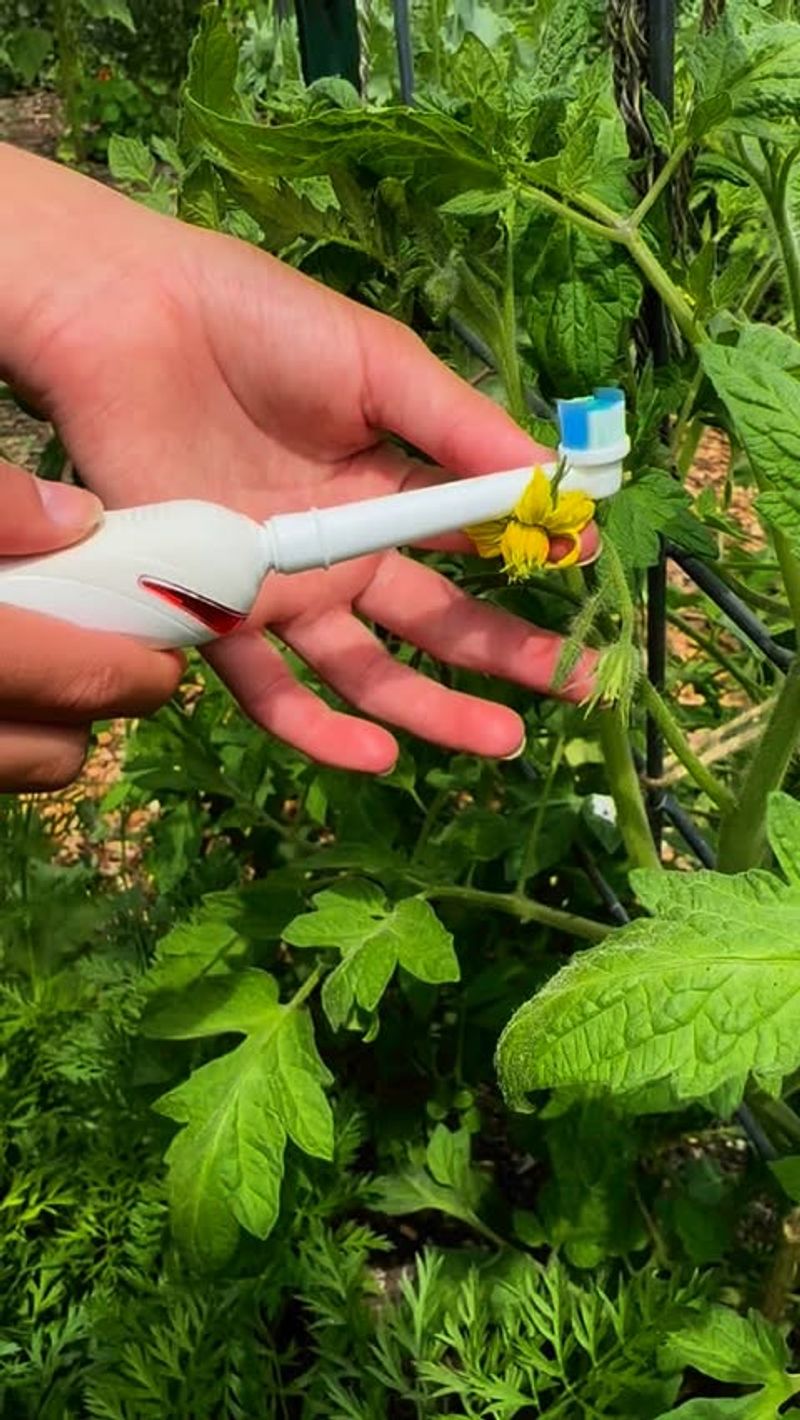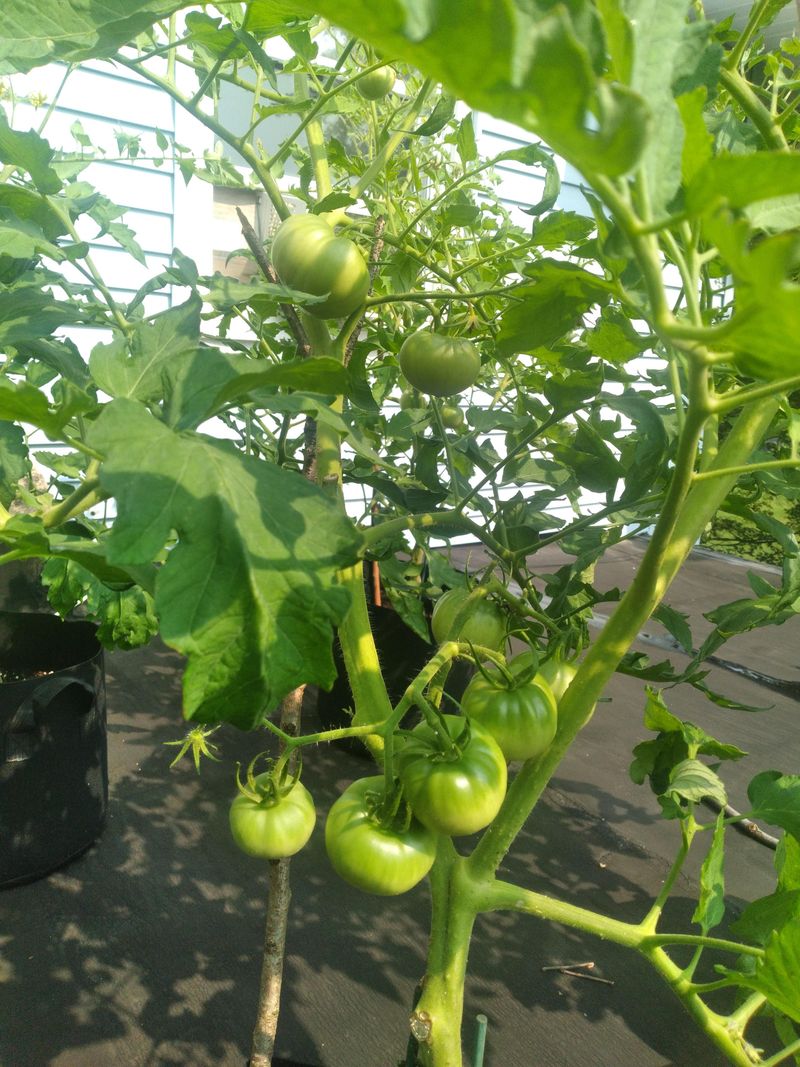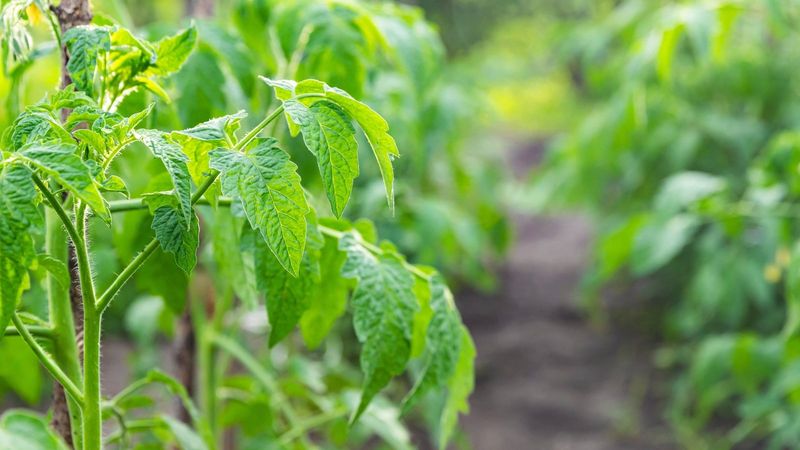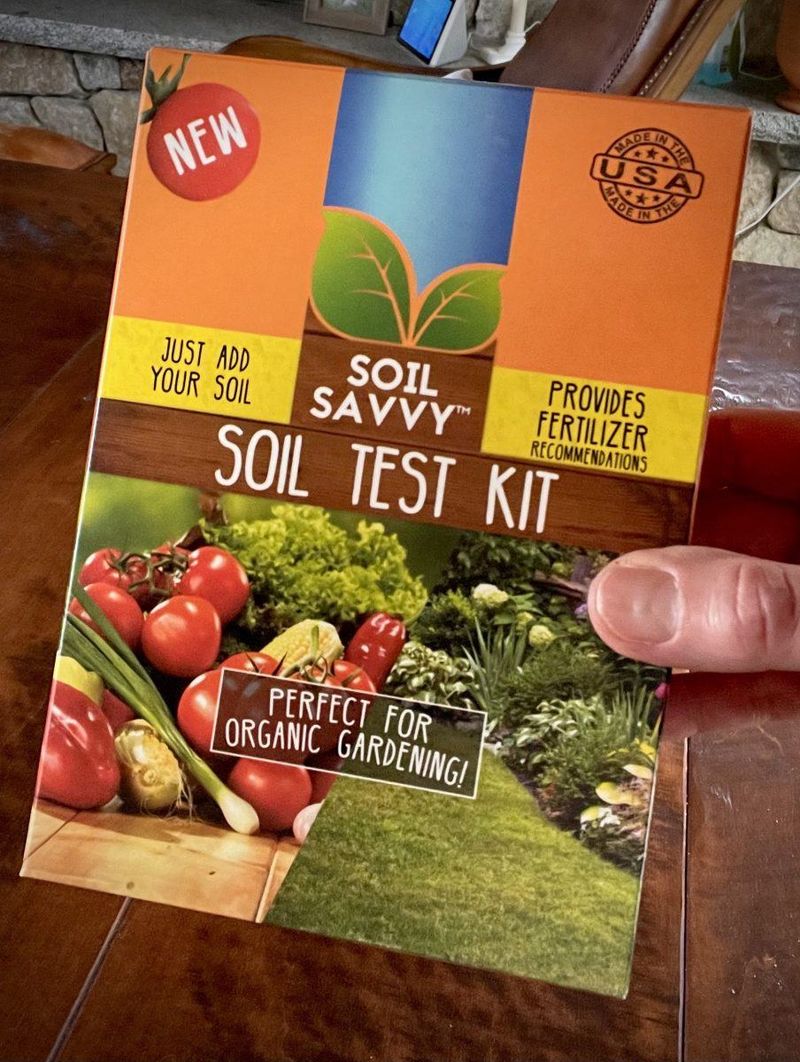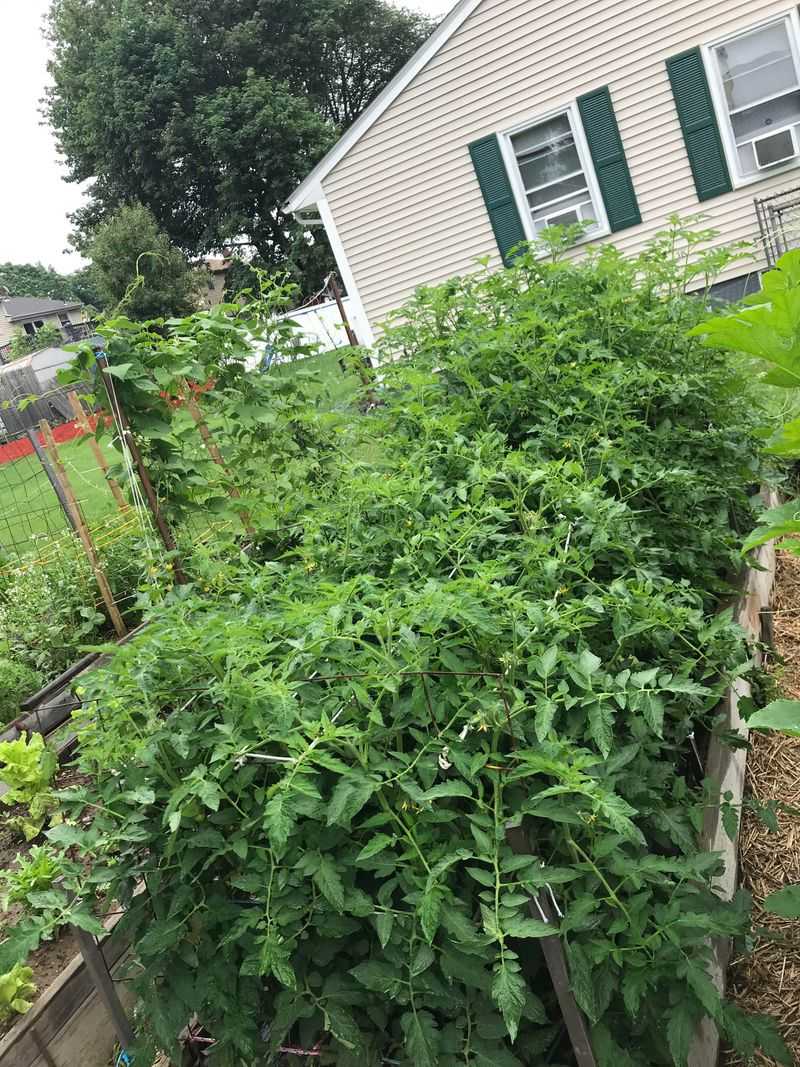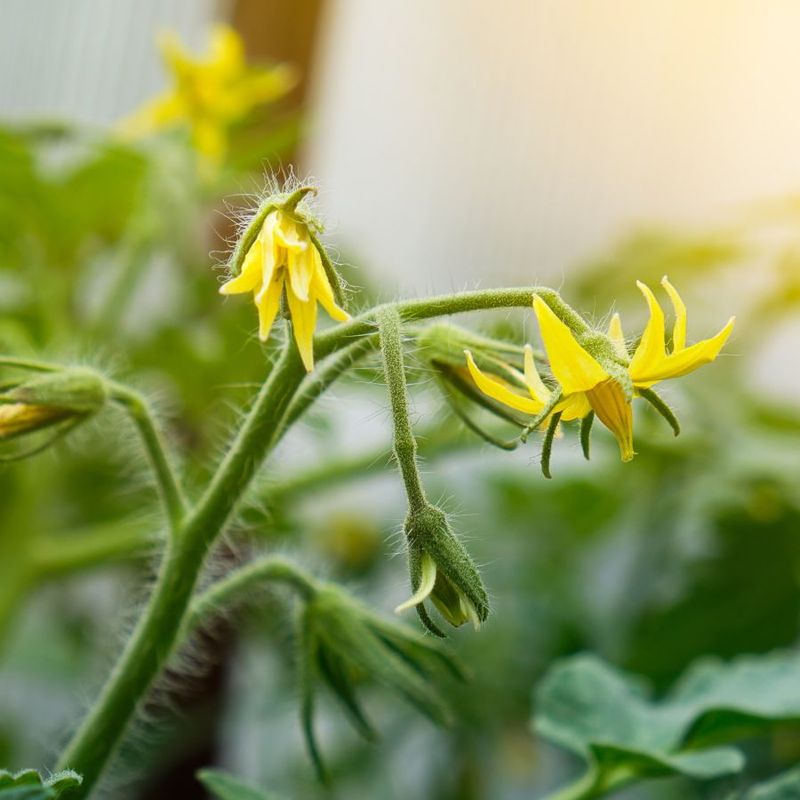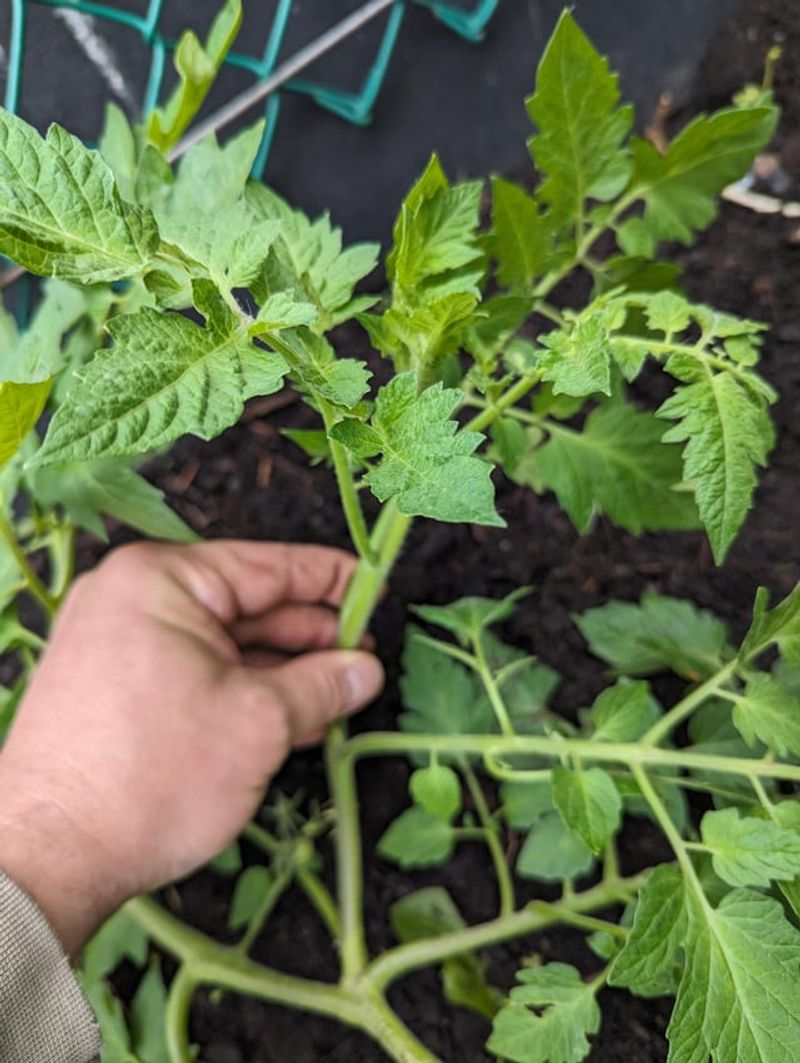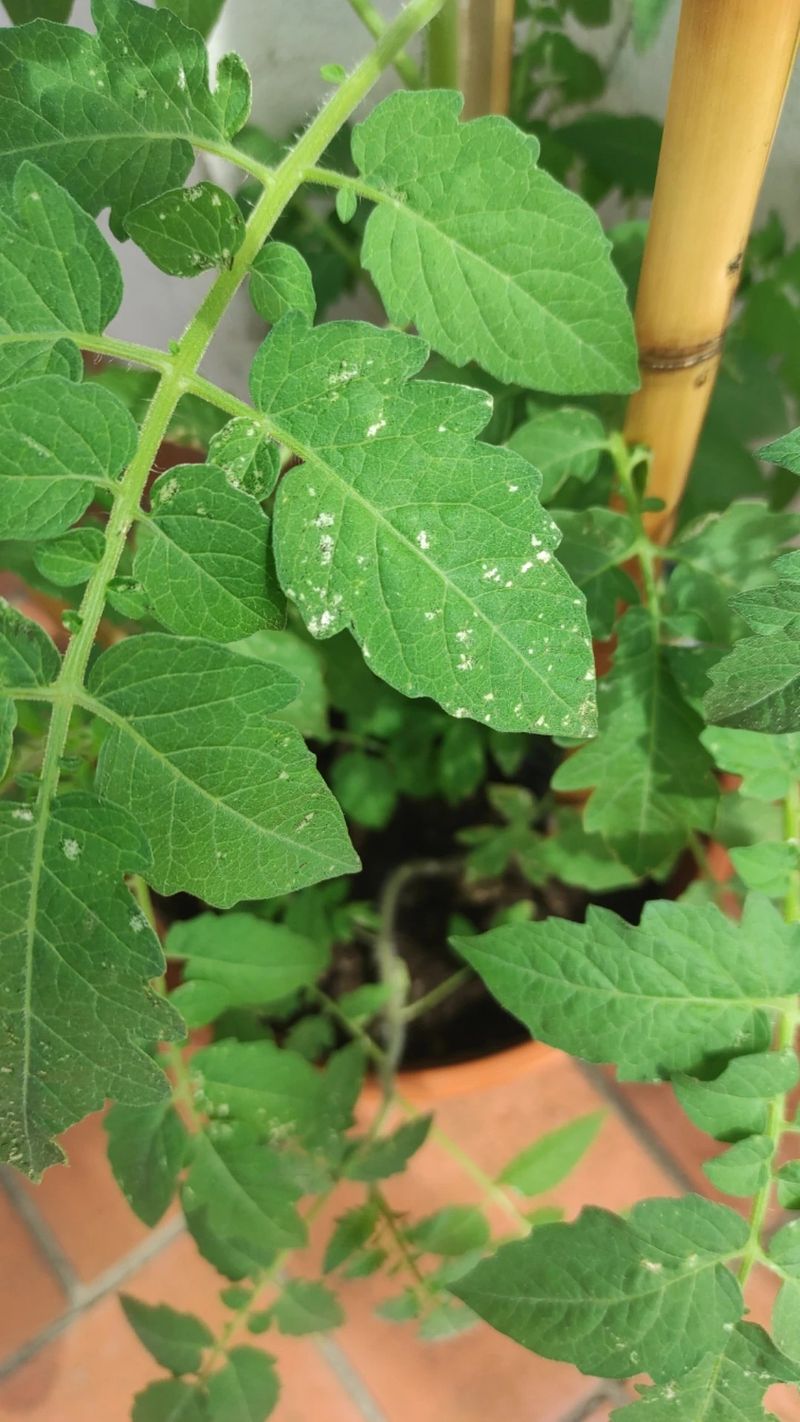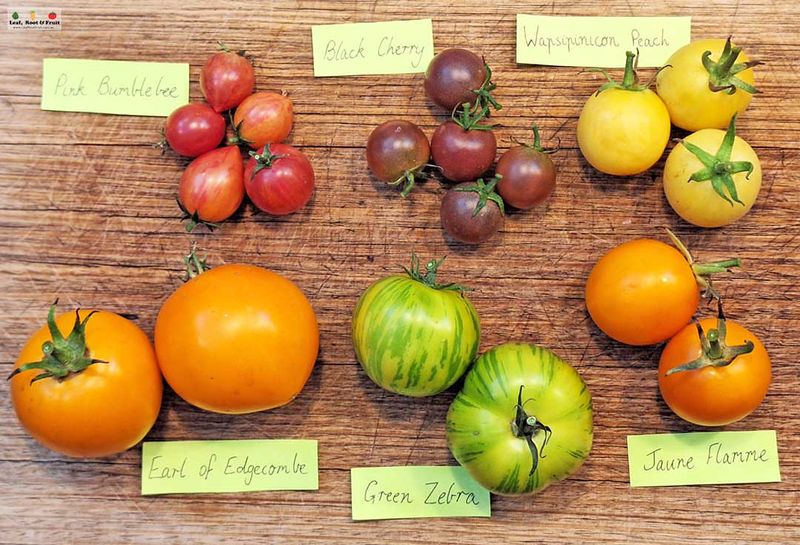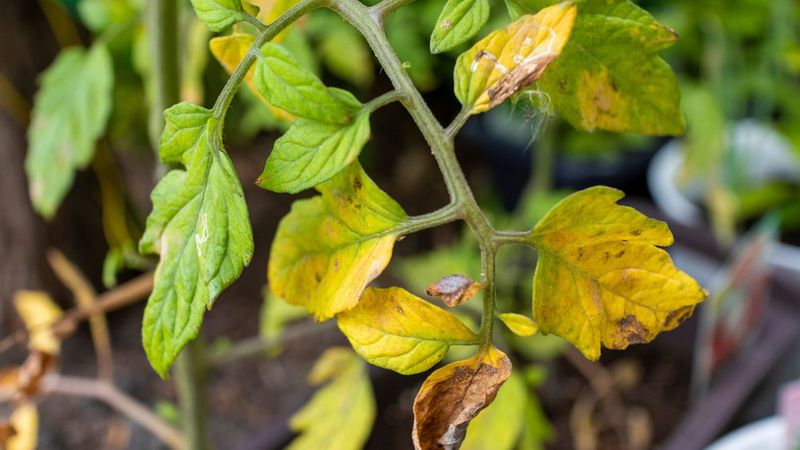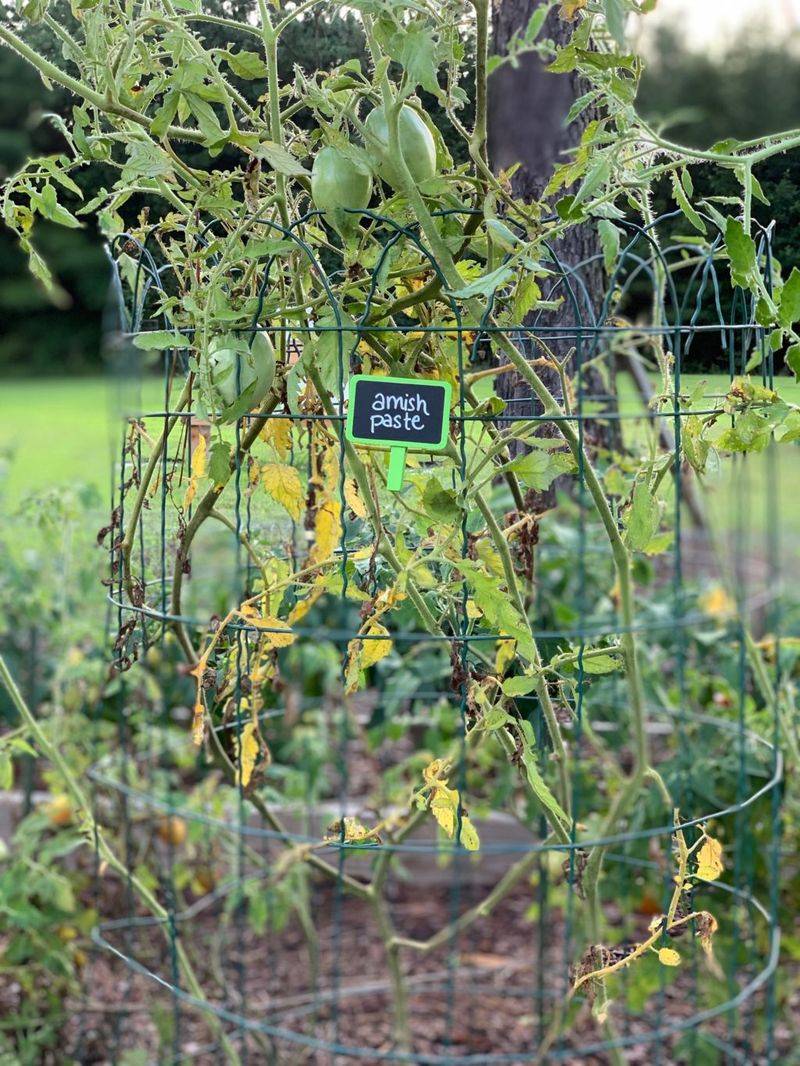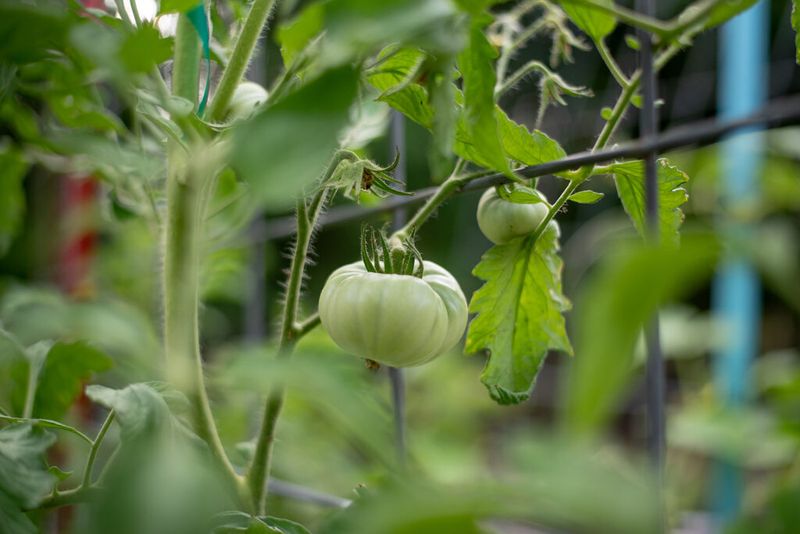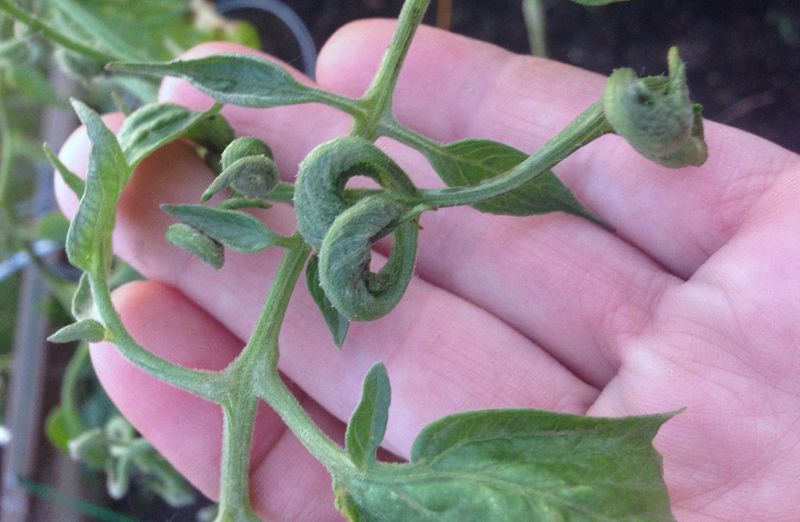Growing tomatoes started as a fun weekend project for me, but I quickly hit a frustrating wall—big, healthy plants with barely a tomato in sight. I’d done everything “right,” or so I thought, but the fruit just wasn’t showing up. It turns out, tomatoes are a little picky.
Too much nitrogen, not enough sunlight, or even just the wrong temperature at the wrong time can throw everything off. Once I dug into the reasons, it all started to click.
With a few simple adjustments, I finally started seeing those green fruits I’d been waiting for. If your plants are all leaves and no tomatoes, don’t give up—there’s a fix, and it’s probably easier than you think.
1. Too Much Nitrogen
Excessive nitrogen promotes leafy growth at the expense of fruit production. Plants focus their energy on creating those beautiful green leaves rather than developing flowers and fruit.
Check your fertilizer’s NPK ratio (those three numbers on the package). For tomatoes, you want something with less nitrogen (first number) and more phosphorus (middle number).
I made this mistake my first year gardening, using lawn fertilizer on my vegetable beds. My tomato plants grew enormous and leafy but produced hardly any fruit until I switched to a balanced fertilizer.
2. Extreme Temperatures
Tomato plants are particular about temperature. When it’s too hot (above 90°F) or too cold (below 55°F), pollen becomes less viable, preventing proper fertilization even if flowers appear.
Pollen viability issues mean flowers may drop without setting fruit. This explains why your plants might flower briefly during heat waves but never develop tomatoes.
Last summer, we had two weeks of 95°F+ temperatures, and all my tomato flowers dropped. Once temperatures moderated, new flowers appeared and successfully produced fruit. Consider shade cloth during heat waves or season extenders during cool periods.
3. Insufficient Pollination
Tomatoes need pollen to transfer from the male to female parts of the flower, usually accomplished by wind or insects. Without this crucial step, flowers will drop without forming fruit.
Indoor or greenhouse tomatoes especially suffer from pollination problems due to lack of natural pollinators or insufficient air movement. Even outdoor plants can face this issue during rainy periods or in areas with few pollinators.
Gently shaking your tomato plants for a few minutes daily during flowering helps distribute pollen. I’ve found this simple habit dramatically increases fruit set, especially for plants in protected locations or during periods of low insect activity.
4. Improper Watering
Inconsistent watering stresses tomato plants, causing them to drop flowers and abort fruit development. Plants prioritize survival over reproduction when water is unreliable.
Deep, regular watering helps establish strong root systems that support fruit production. Aim for consistent moisture – not soggy soil, but never completely dry either.
Water at the base of plants rather than overhead. My container tomatoes struggled until I installed a simple drip irrigation system with a timer. This consistent moisture helped them transition from flowering to fruiting much more successfully.
5. Lack Of Sunlight
Tomatoes are sun-lovers, requiring at least 6-8 hours of direct sunlight daily to produce fruit. Plants in insufficient light will grow tall and leggy, focusing on finding more sun rather than producing fruit.
Even partial shade throughout the day can significantly reduce yields. Plants may look healthy but lack the energy reserves needed to support fruit development.
Moving potted tomatoes to a sunnier spot made a tremendous difference in my urban garden. If relocating isn’t possible, consider pruning nearby trees or structures casting shade, or plan to grow tomatoes in a different location next season.
6. Poor Soil Nutrients
Tomatoes are heavy feeders requiring specific nutrients, especially phosphorus and potassium, to transition from vegetative growth to fruiting. Deficiencies can result in beautiful plants that never produce.
A soil test reveals exactly what your soil lacks, allowing targeted amendments. Without testing, you’re just guessing at what your plants need.
After my soil test showed low phosphorus, I added bone meal to my tomato beds. The plants that had been growing for weeks without fruiting suddenly began setting tomatoes within days of application. This simple correction made all the difference.
7. Overcrowded Plants
Tomatoes need adequate spacing – typically 24-36 inches apart – to thrive. Crowded plants compete for resources and receive poor air circulation, leading to stress that inhibits fruiting.
Crowded conditions also create humid microclimates that promote disease. Even if plants look healthy initially, they’ll struggle to maintain fruit production when packed too tightly.
Thinning my tomato patch was heartbreaking but necessary. I removed every other plant in my overcrowded row, and the remaining plants rewarded me with twice the fruit I would have gotten from the crowded arrangement. Sometimes less truly is more.
8. Humidity Issues
Extreme humidity affects pollen viability. In very high humidity, pollen becomes too sticky to transfer effectively; in very low humidity, it dries out and becomes non-viable.
High humidity also creates ideal conditions for fungal diseases that can stress plants and reduce fruiting. Proper spacing and pruning help improve air circulation around flowers.
During a particularly humid summer, I installed a small fan near my greenhouse tomatoes to improve air movement. This simple solution improved pollination dramatically, and fruit set increased noticeably within days.
9. Improper Pruning
Some tomato varieties benefit from regular pruning to direct energy toward fruit production rather than excessive foliage. Indeterminate varieties especially need management to balance vegetative and reproductive growth.
Removing suckers (the shoots that form in the crotch between the main stem and branches) helps focus the plant’s energy. Without this maintenance, plants may continue producing leaves indefinitely.
The first year I grew indeterminate tomatoes, I let them grow naturally and ended up with jungle-like plants but minimal fruit. After learning proper pruning techniques, I now remove suckers regularly and get earlier, more abundant harvests from less foliage.
10. Pest Damage
Certain pests target tomato flowers specifically. Thrips, spider mites, and flower beetles can damage reproductive parts without leaving obvious signs on the foliage, causing flowers to drop before fruit sets.
Regularly inspect the undersides of leaves and flowers with a magnifying glass to catch early infestations. Biological controls like predatory mites or insecticidal soaps can address problems without harming beneficial insects.
After losing early blossoms repeatedly, I discovered tiny thrips were to blame. Introducing beneficial insects and using reflective mulch helped deter these pests, allowing subsequent flowers to develop normally into fruit.
11. Wrong Variety For Your Climate
Not all tomato varieties perform well in all climates. Some need longer growing seasons, while others are specially bred for heat tolerance or cold resistance.
Research varieties that specifically thrive in your climate zone. Local gardening groups, extension offices, and neighbors with successful tomato harvests can provide valuable recommendations.
After struggling with beautiful but fruitless plants, I switched to varieties specifically developed for my short growing season. Varieties like ‘Early Girl’ and ‘Stupice’ started producing weeks before my previous choices would have matured, ensuring I actually got tomatoes before frost.
12. Blossom End Rot
This common disorder causes developing fruits to develop black, sunken areas at the blossom end. Plants affected by blossom end rot often abort many fruits early, making it seem like they’re not producing at all.
Caused by calcium deficiency – usually from inconsistent watering rather than lack of calcium in soil – this problem prevents successful fruit development. Mulching helps maintain even soil moisture, reducing fluctuations that inhibit calcium uptake.
I’ve found that using crushed eggshells at planting time and maintaining consistent soil moisture virtually eliminated blossom end rot in my garden. The plants that previously dropped their young fruits now produce healthy tomatoes throughout the season.
13. Over-Fertilization
Even balanced fertilizers can cause problems when applied excessively. Over-fertilized plants grow vigorously but may delay or reduce flowering and fruiting as they process the nutrient overload.
Slow-release or organic fertilizers provide steady nutrition without overwhelming plants. Follow package directions carefully – more is definitely not better when it comes to feeding tomatoes.
A neighbor once shared her “secret” tomato fertilizing schedule that involved weekly feeding. When she followed my suggestion to cut back to monthly applications, her plants actually produced more fruit. The previous regimen had been promoting leafy growth at the expense of fruit production.
14. Root Binding Or Poor Root Development
Restricted root systems can’t support fruit production effectively. Container plants often become root-bound, while in-ground plants may struggle with compacted soil or planting containers that were never removed.
Always remove tomato plants completely from containers before planting, gently loosening bound roots. For established plants showing symptoms, root pruning by inserting a spade around the drip line can stimulate new growth.
Upon investigation, my underperforming tomatoes still had the shape of their nursery pots even though I’d planted them weeks earlier. Carefully loosening these compacted roots and adding compost to the surrounding soil helped them establish properly and finally begin fruiting.
15. Plant Age And Timing
Young tomato plants focus on establishing roots and foliage before transitioning to fruit production. Patience is sometimes all that’s needed, especially with late-planted or slow-maturing varieties.
Indeterminate varieties typically take longer to begin fruiting than determinate types. This natural growth pattern can make it seem like plants are underperforming when they’re actually developing normally.
I once nearly pulled out my ‘Brandywine’ tomatoes, thinking something was wrong when they hadn’t fruited by mid-summer. Fortunately, I researched first and discovered this heirloom variety naturally takes 80+ days to mature. By September, those plants were producing the most delicious tomatoes in my garden.
16. Herbicide Contamination
Trace amounts of herbicides can cause tomato plants to grow abnormally without setting fruit. This often happens when using compost or manure containing residual herbicides or from drift from nearby spraying.
Plants affected by herbicides may show twisted stems, cupped leaves, and failure to set fruit even when flowering. Unfortunately, there’s no remedy except to remove affected plants and soil.
After using compost containing horse manure, my tomatoes developed strange growth patterns and wouldn’t fruit. I learned the horses had grazed on pasture treated with persistent herbicides. Now I always ask detailed questions about compost sources and avoid manure from unknown origins.

